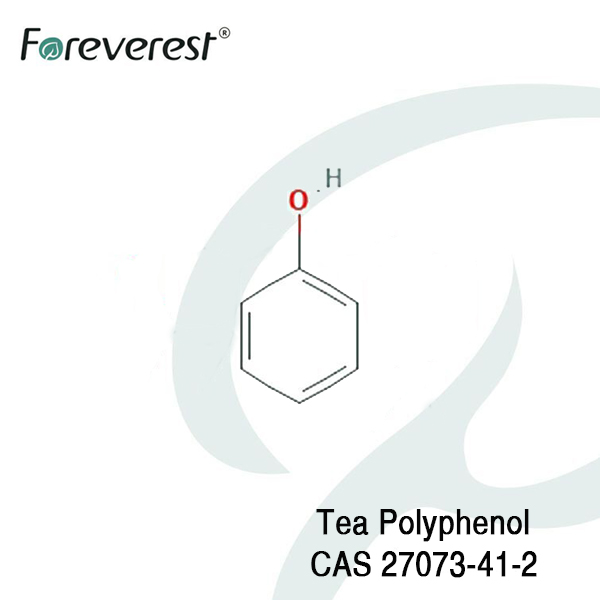R&D
What are natural antioxidants and how do they work in foods?

R&D

The main reason for the oxidative rancidity of the foods containing oils and fats is the oxidation of oils and fats. The oxidation reactions include automatic oxidation, photosensitive oxidation and enzymatic oxidation.
The reactions produce hydroperoxide, which is unstable, easy to decompose into aldehydes, ketones, acids and etc. These substances affect the flavor, color and quality of foods, meanwhile producing many toxic substances damaging the human health, especially free radicals. They can participate in various pathogenesis, causing cancers, coronary heart disease, neurodegeneration and accelerating aging.
Antioxidants can function as hydrogen donors to remove free radicals produced in chain initiation step, so as to restrain or reduce the oxidation of oils and fats. Therefore, to slow the oxidation, prolong the shelf life, the most commonly used and effective way is to add antioxidants in fats and oils. Currently, most of widely used antioxidants are synthetic, such as BHA, TBHQ, BHT and etc. Because there are many potential safety hazard for synthetic ones, for example the excessive use may cause deformity, cancer and some chronic diseases, the safety of synthetic antioxidants has been questioned. On the contrary, natural antioxidants are isolated from plants or animals, high-safety, environmental-friendly, so they are favored more and more by people.
Here we present some common natural antioxidants and their advantages&applications as below:
| Natural antioxidants | Advantages | Characteristic | Applicable oils and fats | Applied industries | |
| Polyphenols: Tea Polyphenol, Rosmarinic acid, Carnosic acid, Chlorogenic acid, Ellagic acid and etc | Tea Polyphenol | Rich sources, simple process, antioxidative effect stronger than BHA, BHT, TBHQ and Vitamin E, while toxic lower than BHA and BHT, an ideal antioxidant | Water soluble, Low oil solubility, modification is required, no synthetic one so far. | Peony Seed Oil, Soybean Oil, Hemp Seed Oil and etc. | Widely used in foods industry, to avoid or slow the oxidative rancidity of fats. |
| Rosmarinic acid | Widely existing in nature, none-toxic, antioxidative activity stronger than Vitamin E, caffeic acid, chlorogenic acid, folic acid,2~5 times of BHT and BHA . | Water soluble, stable at high temperature (190~240℃). insensitive to heat, light and acid. | soybean oil, peanut oil, palm oil, rapeseed oil and lard etc | Widely used in food, healthcare products, cosmetics and etc. | |
| Carnosic acid | Widely existing in nature, none-toxic, antioxidative activity stronger than Vitamin E, PG,BHT,BHA, (3times of BHT and VE), slightly lower than TBHQ .(TBHQ > CA > PG > BHA > BHT > VE), also having antibacterial activity | Oil soluble, stable at high temperature (190~240℃). insensitive to heat, light and acid. | soybean oil, peanut oil, palm oil, rapeseed oil and lard etc | Widely used in food, animal feed, pet food, healthcare products, cosmetics and etc. | |
| Flavonoids: Quercetin, Farrerol, Flavone glycosides and etc | Rich sources, low-cost, simple process, low toxic and side-effect, evident inhibition to the oxidation of fats. | The stability of active ingredient is not clear, the bioavailability is yet to be improved. | Soybean oil, Lard oil, Peanut oil, Corn oil, Canola oil and etc. | Widely used in foods and Health care products as excellent natural antioxidants | |
| Natural Pigments: α-Carotene, β- Carotene, lycopene, Lutein , astaxanthin and etc | Safe, non-toxic, rich sources, high antioxidant capacity, odorless, a group of high-potential natural antioxidants. Astaxanthin is the most potent of all the antioxidants in nature, 1000times of VC, 200times of tea polyphenol. | Unstable, highly perishable, low solubility in water, high cost. | Lard oil, Canola oil, tea seed oil, bilberry seed oil, corn oil, chicken oil and etc. | High potential in food, cosmetic, pharmaceuticals and etc. | |
| Vitamins: Vitamin C, Vitamin E, Coenzyme Q, etc. | Widely existing in nature. Most common antioxidants. In addition to remove free radicals, vitamin C supports the immune system and helps repair bones, teeth and cartilage, Vitamin E maintains eye health, produces hormones that regulate blood pressure, and repairs muscles after exercise. | VC: water soluble, VE: oil soluble | Rapeseed oil, lard, cottonseed oil, soybean etc | widely used in medicinal drugs, healthcare foods, foods, cosmetics and etc. | |
| Polypeptides: Soybean polypeptides, glutathione, Chickpea peptides and etc | Safe, high-efficient, high-activity, can avoid the oxidation of oils and fats. | These drugs have some disadvantages: short plasma half-life, relatively strong immunogenicity, easily degradable. Modification is needed. | Soybean oil, lard oil, sesame oil | Already widely used in medicinal drugs, healthcare foods, cosmetics and etc. | |
| Natural Polysaccharides: Neutral polysaccharide, acidic polysaccharide, glycoprotein, sulfated polysaccharide, etc | Widely existing in nature, non-toxic, good biocompatibility, degradable, renewable | High molecular weight, complex structure, difficult to isolate and purify. | Rapeseed oil, olive oil, chicken oil, goose oil, lard, butter, peanut oil, rapeseed oil, soybean oil, sunflower seed oil, rice bran oil, palm oil, edible blending oil, etc | Suitable for preparing drug controlled-release system, having broad application prospect in clinic and animal husbandry. | |
There are also commonly existing synergistic effect between same types or different types of natural antioxidants. The antioxidant activity of some recomposed antioxidants in certain proportions are significant improved. Due to natural antioxidants are safe, environmental-friendly, and with relatively good antioxidants effect, they are ideal antioxidants for food, medicals, cosmetic and etc.
Reference: